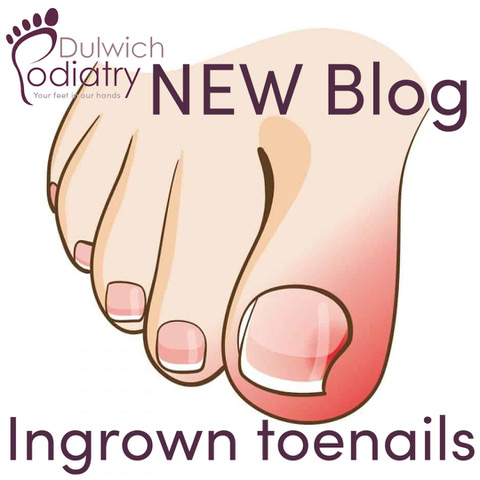Everything you needed to know about ingrowing toenails

Due to Covid-19 some of you may have gone longer than usual without an appointment. We are now open and able to treat all cases including ingrowing toenails.
What are ingrowing toenails?
Toenails protect the tops of your toes with layers of keratin which is the same protein that makes up your skin, hair, and fingernails. It’s keratin that makes them tough and strong to resist daily wear and tear.
There are a number of stages to ingrowing toenails from acute to chronic and infected. In this blog you’ll find out the causes of ingrowing toenails, what we can do for you in the clinic and a brief overview of what to expect if you require surgery.
Ingrowing toenails (onychocryptosis) are one of the most commonly seen foot problems. It occurs when the nail grows into the skin and causes inflammation, pain and sometimes infection. It is a common issue that can present at any age but is particularly common in teenagers. The big toe is most commonly affected, but it may also involve the smaller toes. When the nail pierces the skin, the body tries to heal around the foreign object (in this case the nail) leading to the formation of excess skin (hypergranulation tissue) which can be very painful.
Ingrowing toenails are caused by a combination of extrinsic and intrinsic factors such as:
- Incorrect nail cutting techniques: when nails are cut very short it encourages the skin at the sides of the nail to fold over it.
- Direct trauma: occasionally or frequently stubbing your toe or dropping a heavy object can cause trauma and damage to the nail, leading to ingrowing toenails.
- Hot and sweaty feet which cause the nails to become soft and bend or split into the corners of the skin easily.
- Wide fan shaped nails as they have a tendency to grow outwards pushing towards the skin.
- Genetics: many people inherit the tendency to develop ingrowing toenails from one or both parents.
- Ill fitting footwear can also exacerbate any symptoms as your feet can overcrowd and create and environment for painful ingrowing nails. Sudden growth spurts in children and teenagers can also be a factor, so ensure shoes are the correct size.
Some Do’s and don’ts if you are prone to ingrowing toenails:
DO cut nails straight across or following the shape of the nail with the corners slightly rounded and filed smooth.
DO keep the borders of the nails moisturised to avoid callus build up along the edge of the nail.
DO soak feet before trying to cut your nails to help soften the nail.
DO speak to your podiatrist if you have any concerns.
DON’T trim nails too short.
DON’T wear tight footwear or socks.
DON’T cut or poke down the sides of the nail yourself.
DON’T ignore these symptoms:
- Redness
- Swelling
- Pus
- Pain
- Loss of function
- Abnormal heat
How to treat ingrowing nails
You should not attempt to treat ingrowing toenails at home. There are a lot of variations of ingrowing toenails, some being just severely curved round (involuted) and a podiatrist will treat each variation accordingly. We are able to treat conservatively up until a certain point, these treatments include resecting the nail without exposing the nail matrix (with or without local anaesthetic), packing the nail by using sterile gauze to provide a barrier between the skin and nail. We can also reduce the thickness of the nail to alleviate the pressure on the area as well as removing debris. Conservative treatment will most likely be an on-going treatment and is unlikely to solve the problem completely, however, will relieve pain. For a more complex ingrowing toenail, surgery may be needed. Quite often when it gets to this stage there would be a sign of infection in the area, which we would need to treat before performing surgery as the infection would affect the effectiveness of a local anaesthetic. While doing this we manage the infected area and can supply antibiotics, until the toe is ready for surgery.
Nail surgery:
For surgery we can either remove the whole or part of the nail. This would be done under local anaesthetic, which is why we would need to make sure there was no infection present. Prior to surgery we would run through the risks and benefits and also give details on the healing time as well as the process for the procedure.
What happens in ingrowing toenail surgery?
- After a pre-operative assessment where we will outline the benefits and risks of the surgery and answer any questions you may have about the procedure, we will then book you in for surgery at a later date.
- On the day of the surgery you will need someone to take you home and to wear open toed footwear. You will be asked to avoid alcohol
- We will administer the Local Anaesthetic then remove part or all of the nail. We then use an acid (phenol) to stop it re-growing
- We will put a dressing on and ask you to keep it on and dry for 2-3 days until you come back to see us
- We will see you weekly for the next 2 weeks to check on the progress
If you are concerned or have any questions about ingrowing toenails, call us on 020 8693 6000.



